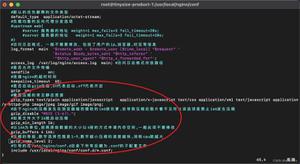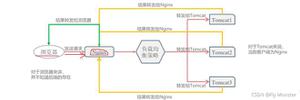UITollectionView中的UITableView
我在一个collectionView中放置了一个tableView并添加了代表。问题是,我想控制collectionView中不同tableView中的数据。UITollectionView中的UITableView
每个collectionView都有一个标签,其中包含当天的名称(例如:“Monday”)。标签下面是一个tableView。在tableView中应根据collectionView的索引显示不同的数据。
在我的例子中,每个tableView都有两个单元格。在collectionView的第一项中的tableView应显示:cell1:“1”和cell2:“2”,第二项中的tableView应显示:cell1:“3”和cell2:“4”。
我目前使用下面的代码:
import UIKit class StundenplanCollectionViewController: UIViewController, UICollectionViewDataSource, UICollectionViewDelegate, UITableViewDataSource, UITableViewDelegate {
override func viewDidLoad() {
super.viewDidLoad()
myHours.append(myH0)
myHours.append(myH1)
myHours.append(myH2)
myHours.append(myH3)
myHours.append(myH4)
myHours.append(myH5)
collectionView.delegate = self
collectionView.dataSource = self
}
override func didReceiveMemoryWarning() {
super.didReceiveMemoryWarning()
// Dispose of any resources that can be recreated.
}
//MARK: Outlets
@IBOutlet weak var collectionView: UICollectionView!
//MARK: Variables
var myDays = ["Montag", "Dienstag", "Mittwoch", "Donnerstag", "Freitag"]
var myHours: [[String]] = Array() //Array that holds myH1 - myH5
var myH0 = ["1", "2"]
var myH1 = ["3", "4"]
var myH2 = ["5", "6"]
var myH3 = ["7", "8"]
var myH4 = ["9", "10"]
var myH5 = ["Error", "Error"]
var tableLoop = 0
var headerColor: UIColor = UIColor(red: CGFloat(255/255.0), green: CGFloat(140/255.0), blue: CGFloat(60/255.0), alpha: CGFloat(1.0))
//MARK: Table and Collection View
func collectionView(_ collectionView: UICollectionView, numberOfItemsInSection section: Int) -> Int {
return myDays.count
}
func collectionView(_ collectionView: UICollectionView, cellForItemAt indexPath: IndexPath) -> UICollectionViewCell {
let cell: StundenplanCollectionViewCell = collectionView.dequeueReusableCell(withReuseIdentifier: "stundenplanCollectionCell", for: indexPath) as! StundenplanCollectionViewCell
cell.titleLabel.text = myDays[indexPath.row]
cell.titleLabel.backgroundColor = headerColor
cell.titleLabel.textColor = UIColor.white
return cell
}
func tableView(_ tableView: UITableView, numberOfRowsInSection section: Int) -> Int {
return myHours[tableLoop].count
}
func tableView(_ tableView: UITableView, cellForRowAt indexPath: IndexPath) -> UITableViewCell {
let cell: StundenplanTableViewCell = tableView.dequeueReusableCell(withIdentifier: "stundenplanTableCell", for: indexPath) as! StundenplanTableViewCell
cell.titleLabel.text = myHours[/*Here should the indexPath.row of the collectionView item be placed*/][indexPath.row]
return cell
}
}
class StundenplanCollectionViewCell: UICollectionViewCell {
@IBOutlet weak var titleLabel: UILabel!
@IBOutlet weak var tableView: UITableView!
}
class StundenplanTableViewCell: UITableViewCell {
@IBOutlet weak var titleLabel: UILabel!
}
image 1:在这里你可以看到的CollectionView第一的tableView(的CollectionView的第一项)
image 2:在这里你可以看到第二的tableView在的CollectionView(的CollectionView的第二项)
image 3:故事板
image 4:(!根据@missionMan了答案 - 感谢的方式)在针对不同对象
更新代码结构
import UIKit class StundenplanCollectionViewController: UIViewController, UICollectionViewDataSource, UICollectionViewDelegate {
override func viewDidLoad() {
super.viewDidLoad()
navigationController?.navigationBar.prefersLargeTitles = false
navigationController?.navigationBar.prefersLargeTitles = true
navigationItem.largeTitleDisplayMode = .always
myHours.append(myH0)
myHours.append(myH1)
myHours.append(myH2)
myHours.append(myH3)
myHours.append(myH4)
myHours.append(myH5)
collectionView.delegate = self
collectionView.dataSource = self
}
override func didReceiveMemoryWarning() {
super.didReceiveMemoryWarning()
// Dispose of any resources that can be recreated.
}
//MARK: Outlets
@IBOutlet weak var collectionView: UICollectionView!
//MARK: Variables
var myDays = ["Montag", "Dienstag", "Mittwoch", "Donnerstag", "Freitag"]
var myHours: [[String]] = Array() //Array that holds myH1 - myH5
var myH0 = ["1", "2"]
var myH1 = ["3", "4"]
var myH2 = ["5", "6"]
var myH3 = ["7", "8"]
var myH4 = ["9", "10"]
var myH5 = ["Error", "Error"]
var headerColor: UIColor = UIColor(red: CGFloat(255/255.0), green: CGFloat(140/255.0), blue: CGFloat(60/255.0), alpha: CGFloat(1.0))
//MARK: Table and Collection View
func collectionView(_ collectionView: UICollectionView, numberOfItemsInSection section: Int) -> Int {
return myDays.count
}
public func collectionView(_ collectionView: UICollectionView, cellForItemAt indexPath: IndexPath) -> UICollectionViewCell {
guard let cell = tableView.dequeueReusableCell(withIdentifier: "stundenplanCollectionViewCell") as? StundenplanCollectionViewCell else { //how can I access the inner tableView? Error: Use of unresolved identifier 'tableView'
return UICollectionViewCell()
}
//set data and reload inner table from outer view controller (StundenplanCollectionViewController according to your code)
cell.dayItems = myHours[indexPath.row]
cell.tableView.reloadData()
//...
return cell
}
class StundenplanCollectionViewCell: UICollectionViewCell {
@IBOutlet weak var titleLabel: UILabel!
@IBOutlet weak var tableView: UITableView!
var dayItems: [String] = []
override func awakeFromNib() {
super.awakeFromNib()
self.tableView.delegate = self // <-- set delegates inner table
self.tableView.dataSource = self
}
}
extension StundenplanCollectionViewCell: UITableViewDataSource, UITableViewDelegate {
func tableView(_ tableView: UITableView, numberOfRowsInSection section: Int) -> Int {
return dayItems.count
}
func tableView(_ tableView: UITableView, heightForRowAt indexPath: IndexPath) -> CGFloat {
return 100
}
func tableView(_ tableView: UITableView, cellForRowAt indexPath: IndexPath) -> UITableViewCell {
let cell: StundenplanTableViewCell = (tableView.dequeueReusableCell(withIdentifier: "stundenplanTableViewCell") as? StundenplanTableViewCell)!
//...
return cell
}
}
class StundenplanTableViewCell: UITableViewCell {
@IBOutlet weak var titleLabel: UILabel!
}
回答:
您可以在表格单元格添加表委托方法 级,然后您可以设置一天的数据。所以每个收集单元都有自己的表格和自己的数据。
是这样的:从您的CollectionView的外细胞在StundenplanCollectionViewController
public func collectionView(_ collectionView: UICollectionView, cellForItemAt indexPath: IndexPath) -> UICollectionViewCell { guard let cell = collectionView.dequeueReusableCell(withIdentifier: "stundenplanCollectionViewCell") as? StundenplanCollectionViewCell else { //<-- HERE
return UICollectionViewCell()
}
//set data and reload inner table from outer view controller (StundenplanCollectionViewController according to your code)
cell.dayItems = myH[indexPath.row]
cell.innerTableView.reloadData()
...
return cell
}
回答:
class StundenplanCollectionViewCell: UICollectionViewCell { //<-- outer cell @IBOutlet weak var titleLabel: UILabel!
@IBOutlet weak var innerTableView: UITableView! //<-- declare inner table
var dayItems: [String] = []
override func awakeFromNib() {
super.awakeFromNib()
self.innerTableView.delegate = self // <-- set delegates inner table
self.innerTableView.dataSource = self
}
}
extension StundenplanCollectionViewCell: UITableViewDataSource, UITableViewDelegate {
func tableView(_ tableView: UITableView, numberOfRowsInSection section: Int) -> Int {
return dayItems.count
}
func tableView(_ tableView: UITableView, heightForRowAt indexPath: IndexPath) -> CGFloat {
...
}
...
组数据你为什么从UITableView试图dequeue一个UICollectionViewCell?
public func collectionView(_ collectionView: UICollectionView, cellForItemAt indexPath: IndexPath) -> UICollectionViewCell { let cell = collectionView.dequeueReusableCellWithReuseIdentifier(reuseIdentifier, forIndexPath: indexPath)
...
}
以上是 UITollectionView中的UITableView 的全部内容, 来源链接: utcz.com/qa/257490.html







